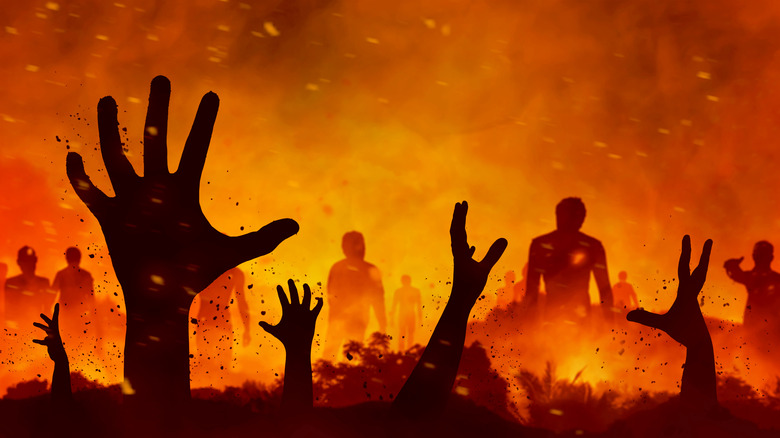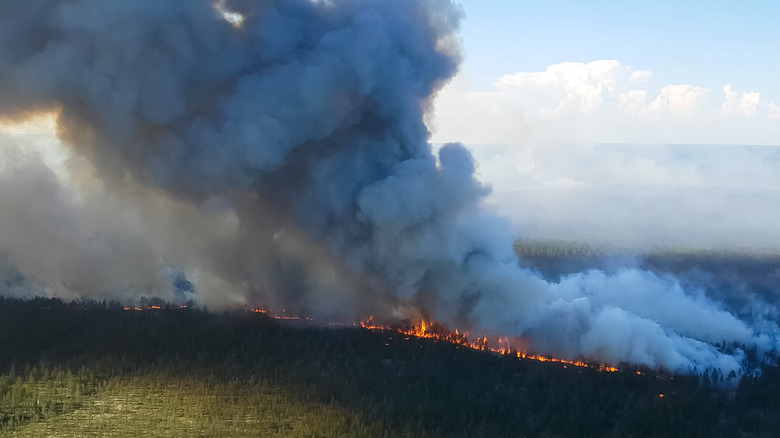The Weird Truth About Zombie Fires
There are zombie fires burning in Siberia, and it has experts alarmed. While they may not be the literal flaming bodies of the walking dead, zombie fires are still very bad for the planet.
In 2020, there were record high temperatures in Siberia, writes The Washington Post, over 100°F, and the permafrost — basically frozen soil — began to melt. Siberia is warming two times faster than almost anywhere else on the planet, and with the surface temperatures hotter, the ground becomes drier, leading to wildfires.
Usually, these will get snuffed out when the snow falls. But zombie fires live on even when they should have died, burning slowly in the permafrost under the snowpack, feeding on the materials like organic matter and "carbon-rich peat" (via KXAN). As Atlas Obscura notes, peat fires tend to burn down, not up, making them harder to put out. Imperial College London engineer Guillermo Rein, who studies the subject, told Atlas Obscura, "They call them zombie fires, but the equivalent would be like an army of zombies. They are very, very difficult to suppress."
Zombie fires aren't limited to Siberia, however. Anywhere in the coldest parts of the globe with exposed permafrost can be affected. A zombie fire was found in Alaska in April 2020, according to The Washington Post, and as WWF Chief Polar advisor Rod Downie told the BBC, "The Arctic is in meltdown. Large areas are burning in front of our eyes."
Zombie fires are contributing to global warming.
Because they're full of decomposing organic matter from plants and animals, both peat and permafrost have vast reserves of carbon dioxide, methane, and other greenhouse gasses stored in the ground, and those are released into the air when they're burned, The Washington Post reports. A study on Nature Geoscience states, "Evidence suggests that 5 to 15% of the vast pool of soil carbon stored in northern permafrost ecosystems could be emitted as greenhouse gases by 2100 under the current path of global warming." The wildfires in all of the Arctic during the summer of 2020 released almost 33% more carbon dioxide into the atmosphere than they did in 2019, which were already at record levels, the BBC writes.
The danger is that if the fires smolder all winter, when the snows melt again in the spring, they can reignite to full wildfires again, Science Daily reports. The more the ground burns, the more planet-warming gases are released into the atmosphere — contributing to increasing global temperatures — and creating a never-ending cycle of warming-burning-gas releasing.
Scientists are trying to come up with ways to "kill" the zombie fires, Atlas Obscura writes, by using a mix of water and fire suppressants to be sprayed on the smoldering ground. "It's a little bit actually like soap — it just reduces the surface tension of the water and allows the water to penetrate better," said Rein. Initial studies are promising, but there's still much more to be done before zombie fires become a thing of the past.

